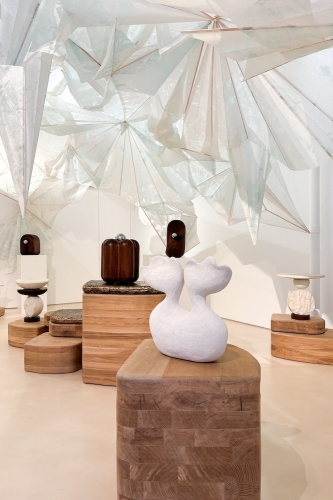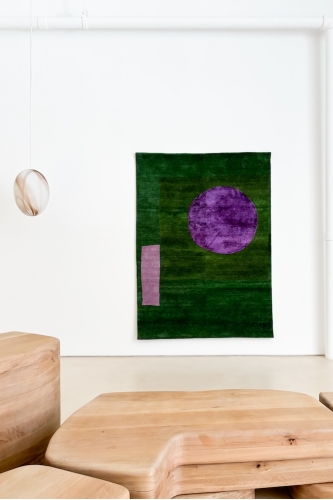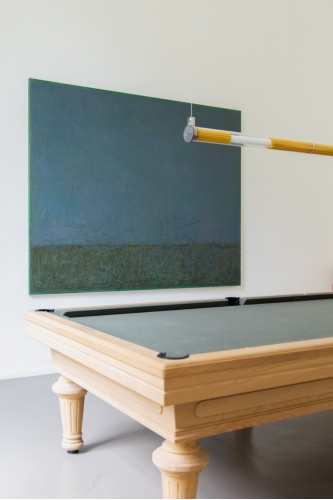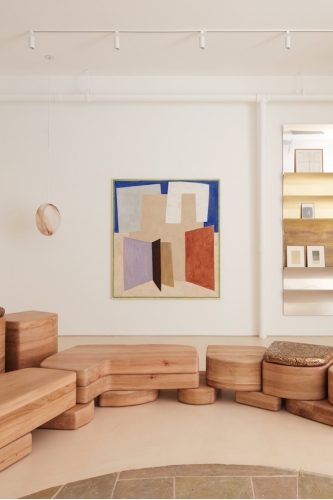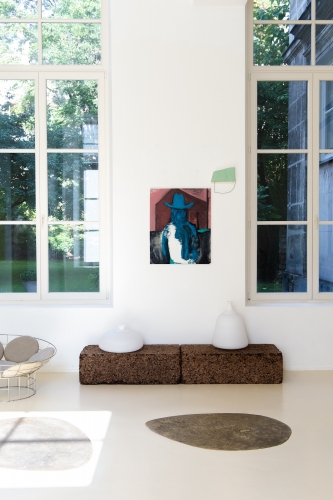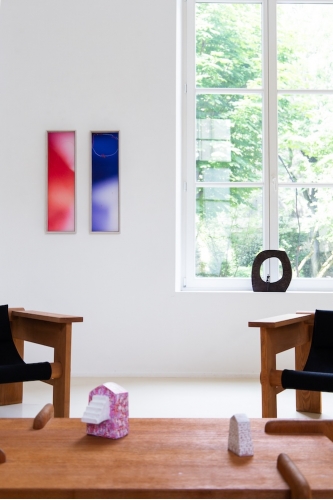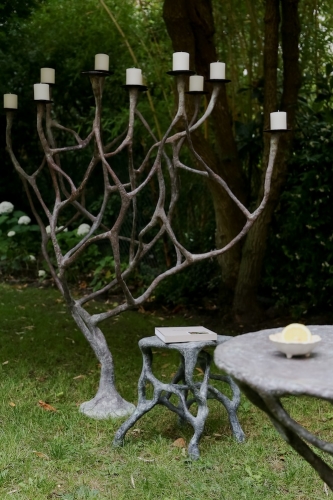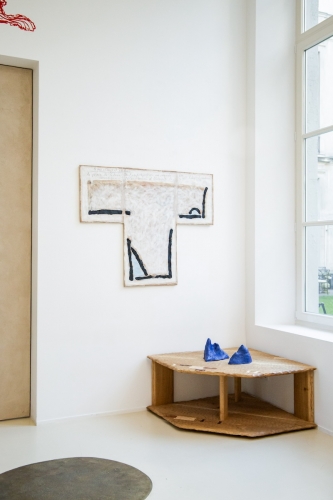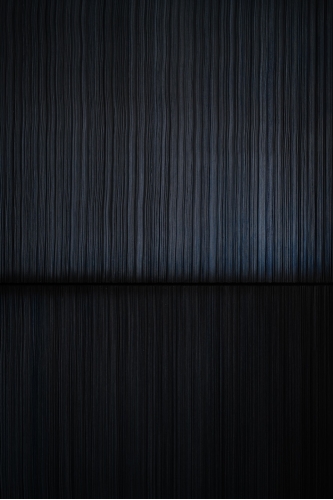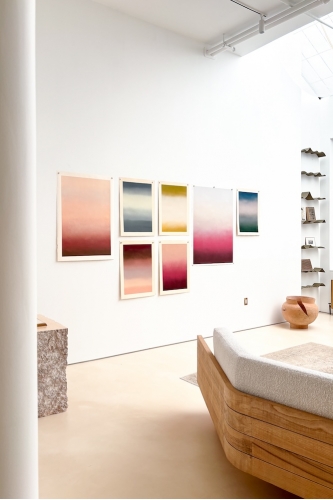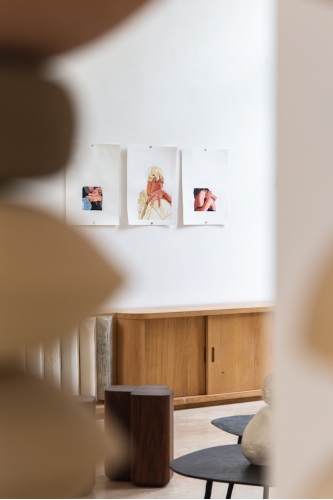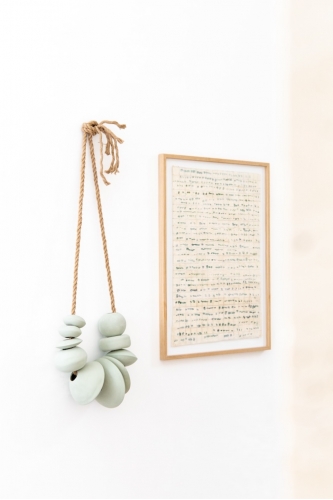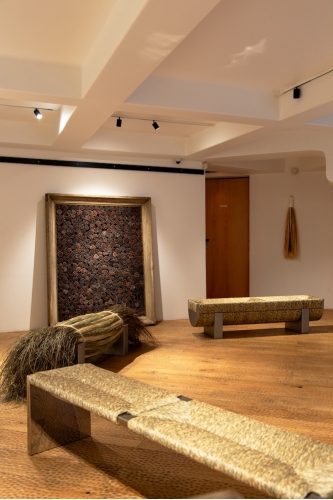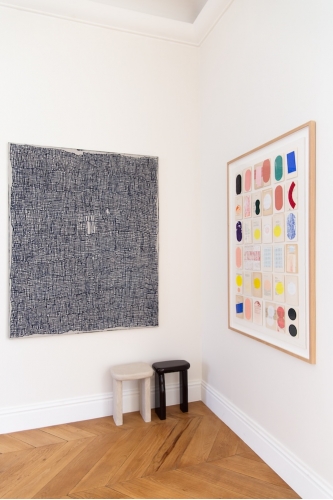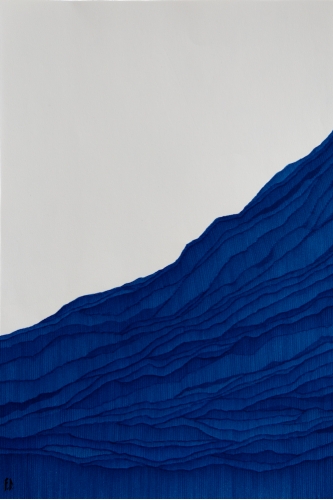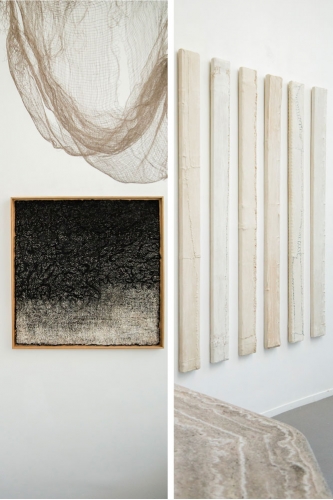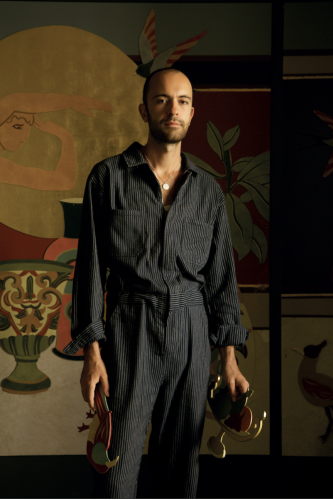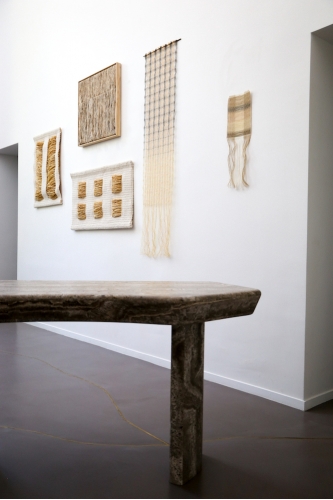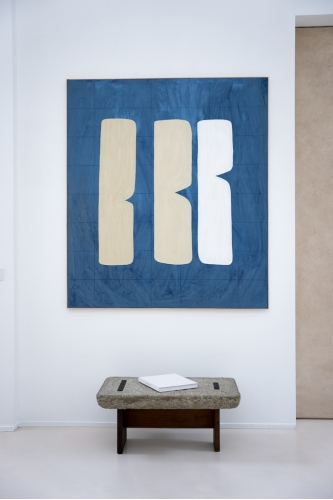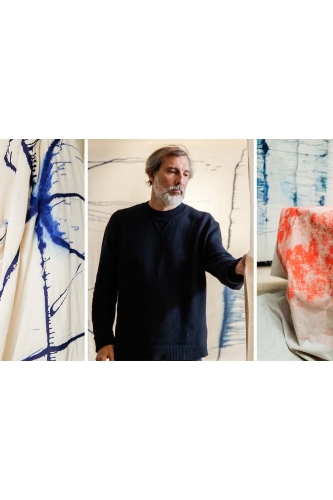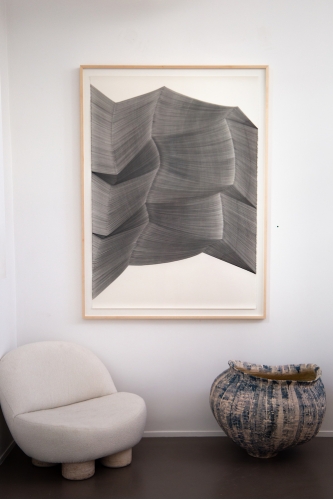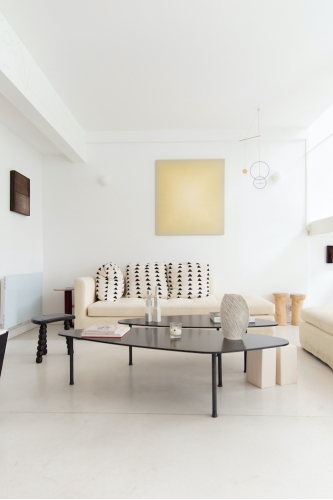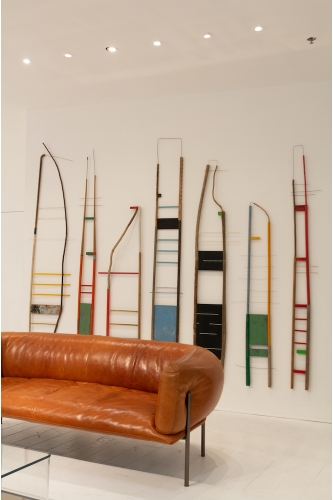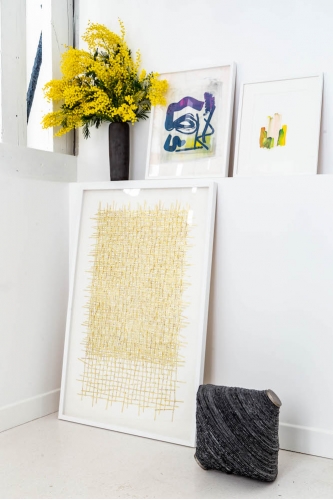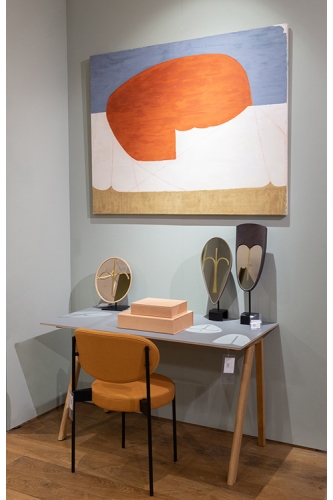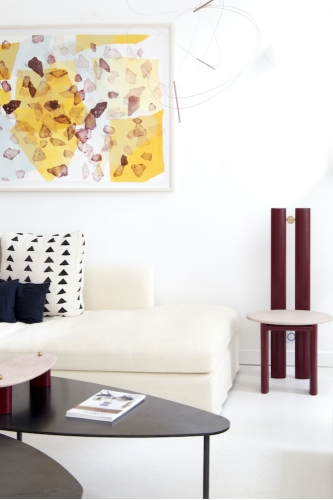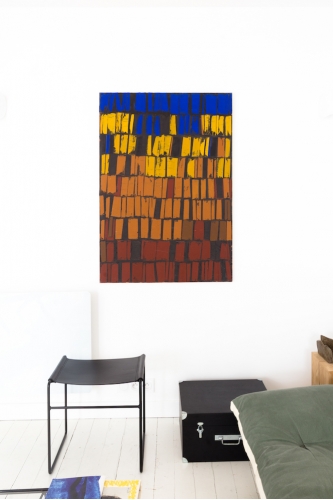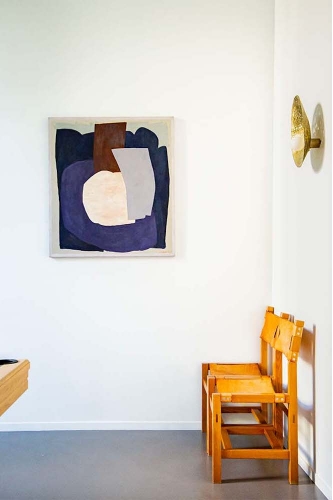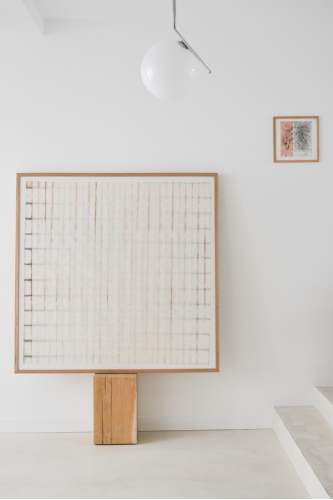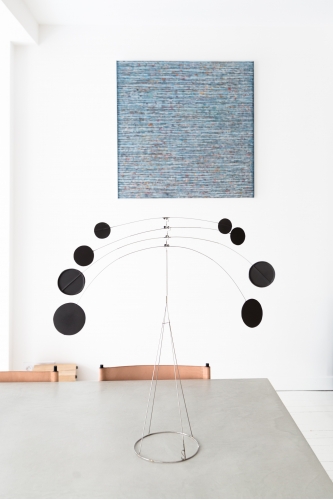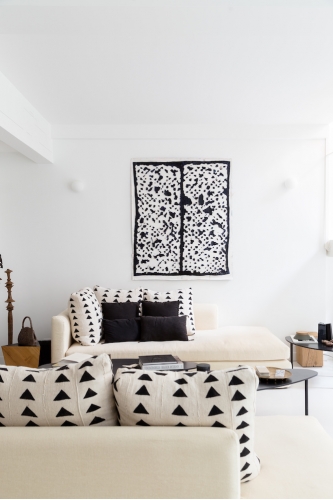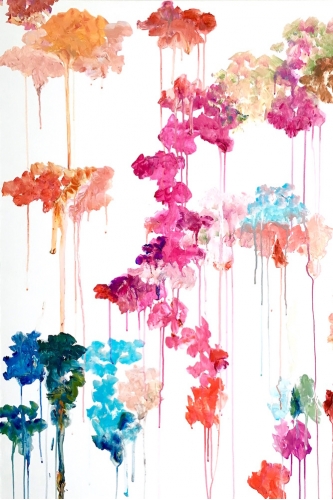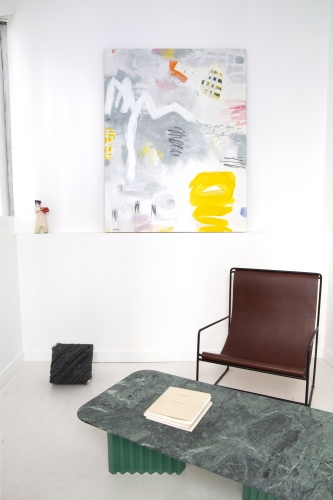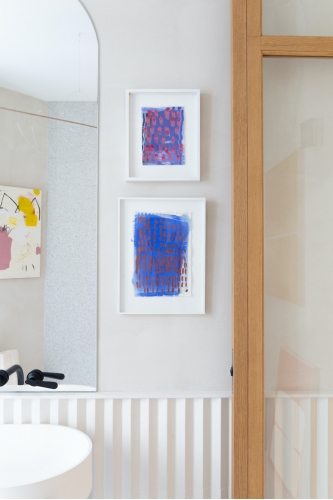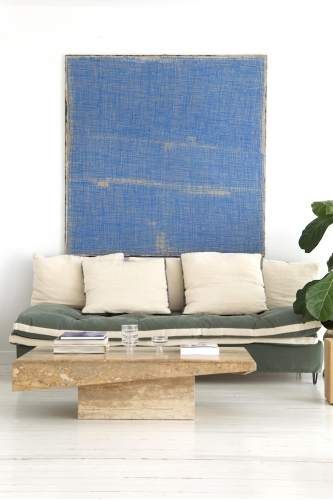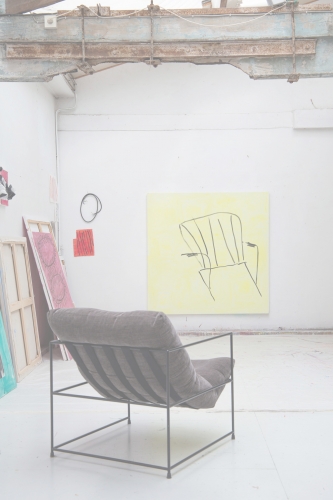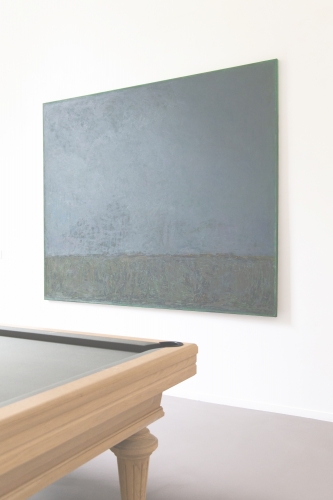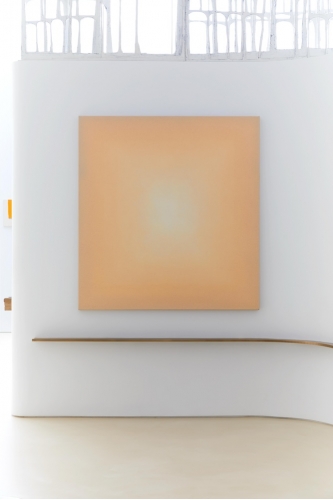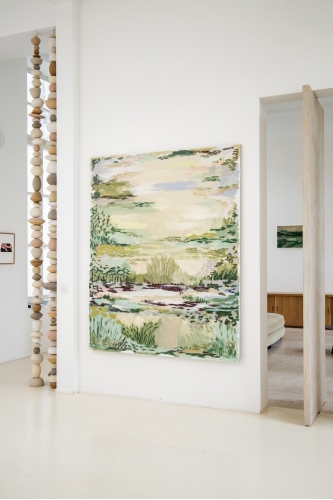exhibitions
see more
PAST EXHIBITIONS

Patrick Lainville & Claude Tetot
The energy of the vacuum
March 2021
Claude Tétot
Master of an eclectic expression diffusing vital energy in an agreement of disagreements, Claude Tétot develops a singular abstract work which tends to make visible 'the fullness of the emptiness', which he considers to be the very essence of painting: "In a painting, the essential thing is not what you paint but what you leave behind".
(...)
At the crossroads of his artistic adventures, carried out for almost thirty years, Claude Tétot transcribes, through his own plastic language, his emotions, his reflections, his observations, etc., into an abstract pictorial syntax from which an unexpected harmony emerges. It is an encounter, and a parallel search, through time, space and style that we are witnessing. Some of Claude Tétot's works invite seemingly disparate components - oil colour marks as if applied by hand, sharp lines in fluorescent hues, shaded backgrounds or spaces left completely empty - to dialogue with each other and by themselves; in other works, the white of the canvas is used as if it were a form in its own right fully asserting its presence. Since his beginnings, Claude Tétot has never ceased to probe the links, in painting, between form, emptiness and vibrations: the emptiness animates the coloured forms that surround it; the latter give content to the emptiness that feeds on them; the form takes on all its power thanks to the space left, because without emptiness, space does not vibrate.
(...)
White, which has become both a background and a form, is now placed at the heart of his work. The result is a circulation, at first sight destabilising, of multiple pictorial elements, which nevertheless reveal an enigmatic unity, a disharmonious balance which, in this way, imposes attention on the eye, a tension of perception. It is a call from the artist for his viewers to enter freely into his painting to reflect, interpret and exchange.
Jeongmin Domissy-Lee Doctor of Linguistics, Art Consultant
Alban Lanore
Talking about sculpture is easy if you just describe it. By describing it, we discover the person who made it. No doubt he made it with his strength, with what he is physically, but above all with the components of his mind, with the ways in which his thought meets reality - a reality that is as much inner as outer.
Alban Lanore's sculpture is the application of human strength to the carnal softness of wood, the application of the decision and mechanical speed of the tool to the silent dream and internal slowness of the organic material. It is undoubtedly that Alban Lanore associates in himself two natures: the abstract and rational one of an upright spirit which finds its expression in the sharpness of steel, in the radicality of metal, and the imaginative nature similar to the melancholic but secretly resolute flexibility of wood. In his sculpture, these two characteristics are expressed in opposition to each other, rather than being reconciled, forming an aesthetic of contrast. The secret design of the wood undergoes the flat surfaces and angles imposed by the sculptor. It moulds itself inside the forms and yet beyond the interruptions, the sudden changes, beyond the sharp edges, it continues its original course.
Alban Lanore is tall, solid, certainly courageous. Faced with his work, with the tastes which found his sculpture, with the opposition of his characters, he remains free since he fully assumes the choice of his forms and his material. And his freedom is beautiful to see!
Jean ANGUERA - Sculptor
(Vice-president of the Academy of Fine Arts)




